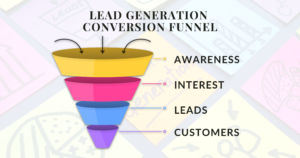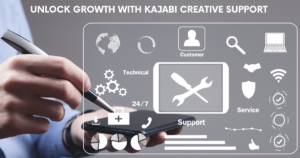As efficiency becomes a top priority, marketing automation is no longer a luxury—it’s a necessity for businesses striving to scale their operations and enhance efficiency. As we step into 2025, implementing marketing automation effectively can be a game-changer, helping businesses save time, increase ROI, and foster better customer relationships.
Whether you’re a small business owner, a content creator, or an entrepreneur, this guide will walk you through how to implement marketing automation this 2025 and leverage it to achieve your business goals.
What Is Marketing Automation and Why Does It Matter?
Marketing automation refers to the use of software and technology to streamline, automate, and measure repetitive marketing tasks and workflows. It enables businesses to nurture leads, execute campaigns, and engage with their audience at scale while maintaining a personalized touch.
Benefits of Marketing Automation in 2025:
- Enhanced Efficiency: Free up time spent on manual tasks like sending emails or scheduling social media posts.
- Improved Personalization: Tailor your messaging based on customer data and behaviors.
- Better Lead Management: Nurture leads with automated workflows that drive conversions.
- Scalable Growth: Handle multiple campaigns and communications with ease as your business grows.
Step-by-Step Guide: How to Implement Marketing Automation This 2025
1. Define Your Goals
Before diving into tools and workflows, it’s crucial to identify your business objectives. Ask yourself:
- What tasks do I want to automate (e.g., email marketing, lead generation, social media)?
- What metrics will define success (e.g., higher email open rates, more website traffic, increased conversions)?
Having clear goals ensures that your marketing automation strategy aligns with your business needs.
2. Choose the Right Marketing Automation Tool
In 2025, the market is brimming with powerful automation platforms like:
- HubSpot CRM: Perfect for customer relationship management, email marketing, and analytics.
- Kajabi: Ideal for course creators looking to automate email campaigns and manage membership sites.
- Kartra: A comprehensive all-in-one platform designed for businesses that need email marketing, landing pages, sales funnels, and even e-commerce capabilities
- Go High Level: A robust tool for building workflows, landing pages, and tracking leads.
Each tool has unique strengths, so choose one that integrates seamlessly with your existing systems and supports your goals.
3. Segment Your Audience
One-size-fits-all marketing no longer works. Segment your audience based on:
- Demographics (age, location, job title).
- Behavior (purchase history, website interactions, email engagement).
- Stage in the customer journey (lead, prospect, or returning customer).
Automation tools allow you to create targeted campaigns for each segment, increasing engagement and conversions.
4. Create and Automate Workflows
Workflows are the backbone of marketing automation. These are sequences of actions triggered by specific events, such as:
- Welcome Emails: Automatically send an email when someone subscribes to your newsletter.
- Abandoned Cart Reminders: Nudge customers to complete their purchase.
- Follow-Up Sequences: Send emails after a webinar or product demo.
By setting up workflows, you ensure timely communication with your audience without manual intervention.
5. Leverage AI-Powered Personalization
With advancements in AI, personalization in 2025 has reached new heights. Use AI tools to:
- Predict customer behavior.
- Recommend products based on past purchases.
- Tailor email subject lines, content, and timing for maximum impact.
Personalized automation enhances customer experiences and builds stronger relationships.
6. Track Performance and Optimize
Marketing automation isn’t a “set it and forget it” strategy. Regularly monitor key metrics like:
- Email open and click-through rates.
- Conversion rates from landing pages.
- ROI on automated campaigns.
Use these insights to refine your workflows, improve content, and achieve better results over time.
Common Mistakes to Avoid When Implementing Marketing Automation
- Over-Automating: Automation should enhance, not replace, human connection. Avoid relying too heavily on automation at the expense of personalization.
- Neglecting Data Quality: Poor data leads to ineffective campaigns. Regularly clean and update your CRM.
- Skipping Training: Ensure your team is well-trained on the automation tool to maximize its potential.
Ready to Transform Your Marketing in 2025?
By implementing marketing automation this 2025, small businesses can streamline operations, improve customer engagement, and drive growth like never before. The key is to start with a clear strategy, choose the right tools, and continuously refine your efforts based on data insights.
At DelCreatives, we specialize in helping businesses set up and manage marketing automation systems like Kajabi, HubSpot CRM, and Go High Level. From creating workflows to designing landing pages and email campaigns, our team ensures your automation strategy works seamlessly.
Take the Next Step
Ready to revolutionize your marketing efforts? Schedule a free consultation with DelCreatives today and let us help you implement a winning marketing automation strategy for 2025.
👉 Book Your Free Consultation Now
Conclusion
Marketing automation in 2025 isn’t just about saving time—it’s about creating meaningful, scalable, and measurable connections with your audience. By following these steps and leveraging expert guidance, you’ll position your business for success in the digital age.






